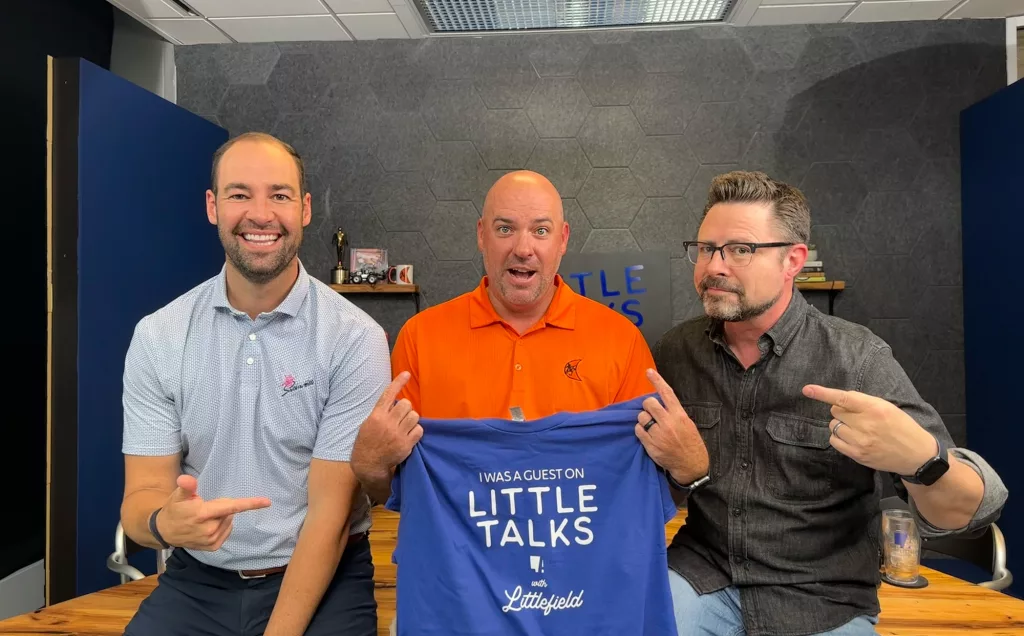Welcome back to another edition of Little Talks with Littlefield Agency! Yesterday, we were very happy to welcome Mike from Grasshopper Mower back to the office here in Tulsa. It was an incredibly busy and productive day with him as we worked towards all things 2024 planning. Additionally, a shoutout to Ditch Witch for a wonderful product shoot. It’s a busy time of the year, and we love it!
We are also thrilled to announce some office enhancements on our floor, including a new podcast studio! We go into detail on this week’s episode—stay tuned for updates in the coming months!
Roop and Sam came across a great CAPTCHA article earlier this week and wanted to share their thoughts.
CAPTCHAs Versus AI
Why is it harder to prove you’re not a robot? Because AI trains itself on CAPTCHAs and can also determine the level to which humans can pass them. This means finding a CAPTCHA that a bot can’t solve is a constant battle.
In 2000, Luis von Ahn, current co-founder and CEO of Duolingo, gained inspiration from bots spamming Yahoo and signing up for millions of free accounts. He met with his mentor, Manuel Blum, to create the Completely Automated Public Turing test to tell Computers and Humans Apart (CAPTCHA). This prompted site visitors to interpret misshapen letters and numerals. With this solution, humans could access the site securely, and bots couldn’t.
CAPTCHAs Are Getting More Strange As AI Advances
Optical character recognition (OCR), according to Wikipedia, is the electronic or mechanical conversion of images of typed, handwritten or printed text into machine-encoded text, whether from a scanned document, a photo of a document, a scene photo or from a subtitle text superimposed on an image.
This process has also helped teach bots to identify irregular text. By 2014, Google’s AI accurately read CAPTCHAs 99.8% of the time, and humans could only read it 33% of the time.
CAPTCHAs have continued to evolve, asking users to identify particular images or audio, for instance, but AI is catching up, too. It’s getting ever weirder now that AI tools have been learning to create CAPTCHAs themselves. According to Motherboard, Discord users reported CAPTCHAs full of mutated objects asking them to ID stuff that isn’t even real, for example, a snail-yoyo thing called a “Yoko.”
Where Do We Go From Here?
What’s next? The “I am not a robot” button uses behavior leading up to clicking the button—e.g., browser history, mouse movement—to gauge your humanity. Future tech could build on this to create a state of constant surveillance. Gross. But ultimately, as bots get smarter, CAPTCHAs will continue to be lucky if they’re just one step ahead and will need every tool at their disposal.
As always, thanks for listening. We will catch you next week!
– Roop, Sam, Brenda & Brandon




